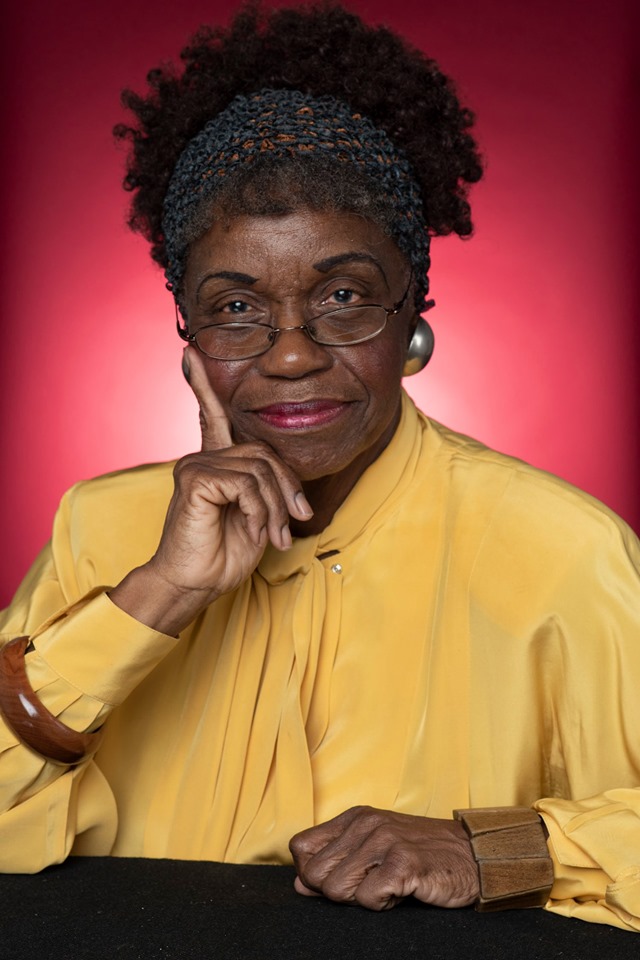By Norma Adams-Wade
Founding Member of NABJ
“Southern trees bear a strange fruit,” Billie Holiday sang in a 1939 song called “Strange Fruit” that also was a poem and a novel. Lady Day’s song lamented the “strange and bitter crop” of black bodies lynched and hanging from “southern trees” with “blood on the leaves and blood at the roots.” Dallas Black history sleuth Dr. George Keaton Jr. describes lynching, slavery, and racial violence as “hard topics” that the public discussed November 19 at a free community forum that explored Dallas’ deadly past related to slavery and that set a future path for memorializing victims of slavery.
A second forum seeking community input will be from 7 pm to 8 pm Dec. 4, 2019 at Dallas Heritage Village, 1515 S. Harwood St., just south of downtown Dallas. The City of Dallas Office of Arts and Culture is the main host. Co-hosts are Dallas Heritage Village and the nonprofit Remembering Black Dallas where Keaton is founder and executive director. The forums are asking the public for opinions and suggestions about how to implement plans for a public arts project that will memorialize victims of racial violence who were lynched in Dallas County between 1853 and 1920. Various steps include community input, approvals by citizen, city, and arts entities, selecting and funding an artist, and possible dedication of the art piece by the summer of 2021, said Kay Kallos, City of Dallas public art program manager.
She said Dallas’ Freeman’s Cemetery is an earlier project and some other cities with similar projects include New York; Alexandria, Virginia; and Montgomery, Alabama. “So much of Dallas’… [slavery-related] history is being pushed under the rug,” Dr. Keaton said. “We passed by these places everyday where…[atrocities happened]. The victims need to be memorialized.” The victims would include the infamous and well-documented hanging of Allen Brooks who a mob lynched at Elks Arch, then at Main and Akard streets in downtown Dallas in 1910.
A historic postcard shows an estimated crowd of 5,000 white citizens watching the atrocity. Another lynching victim would be Jane Elkins, the first Black female legally hanged in Texas in 1853, accused of murdering her owner. Authorities hanged her from the gallows in Dallas County Courthouse Square where the Old Red Courthouse now stands. Keaton has been working on his part of the project for more than two years — to erect a commemorative artwork at the almost unknown Martyr’s Park, — but efforts by earlier advocates go back nearly 30 years.
Martyr’s Park sign marker gives its address as 379 Commerce St. (some records give the address as 265 Commerce St), not far from the Grassy Knoll where President John Kennedy was assassinated in 1963. The park was designated in 1991 to mark the place where three enslaved Africans were hung in 1860, accused of starting the 1860 fire that burned most of early downtown Dallas.
I was just thinking….
It was 25 years ago that I experience a memorable encounter with the legacy of lynching. Walking through America’s Black Holocaust Museum in Milwaukee, Wisconsin, and my eyes transfixed on the images and artifacts. These were placed there to snatch visitors from indifference to a stark awareness of a past world where your black skin could leave you hanging from a tree because of a white person’s brutal whim.
Museum founder James Cameron Jr., who was 80 then and my personal tour guide, shared his terrifying personal story of being the nation’s only known survivor of a lynching back in 1930 when he was 16. Two of his friends did not survive. A photo of their hanging became historic. Suffice it to say that Cameron’s experience was indeed an understandable reason why he founded the museum in 1984. It was his mission to shock the world awake to an evil savagery that enslaved Africans and their descendants faced for centuries while the world looked on with approval or away with apathy.
His 1994 memoir is A Time of Terror: A Survivor’s Story. Cameron died in 2006 at age 92. The museum closed its building in 2008, converted to an online museum in 2012, and currently is working to reopen in a new building. So, when I learned that Keaton and co-sponsors were hosting public forums about how to commemorate Dallas County victims of lynching and other racist atrocities, I was highly intrigued. I remembered how Cameron’s personal story and the various historic descriptions and photographs of lynching’s I’d read about and seen in history books were chronicles and images I could not erase. In promoting the forums, Keaton quotes the late writer and performer Dr. Maya Angelou’s words: “There is no greater agony than bearing an untold story inside you.”
To inquire further, contact Dr. Kay Kallos at the city’s Office of Arts and Culture, 214-670-3281 or email: kay.kallos@dallascityhall.com or Remembering Black Dallas, rbdallasinc@yahoo.com or call 469-399-6242.










